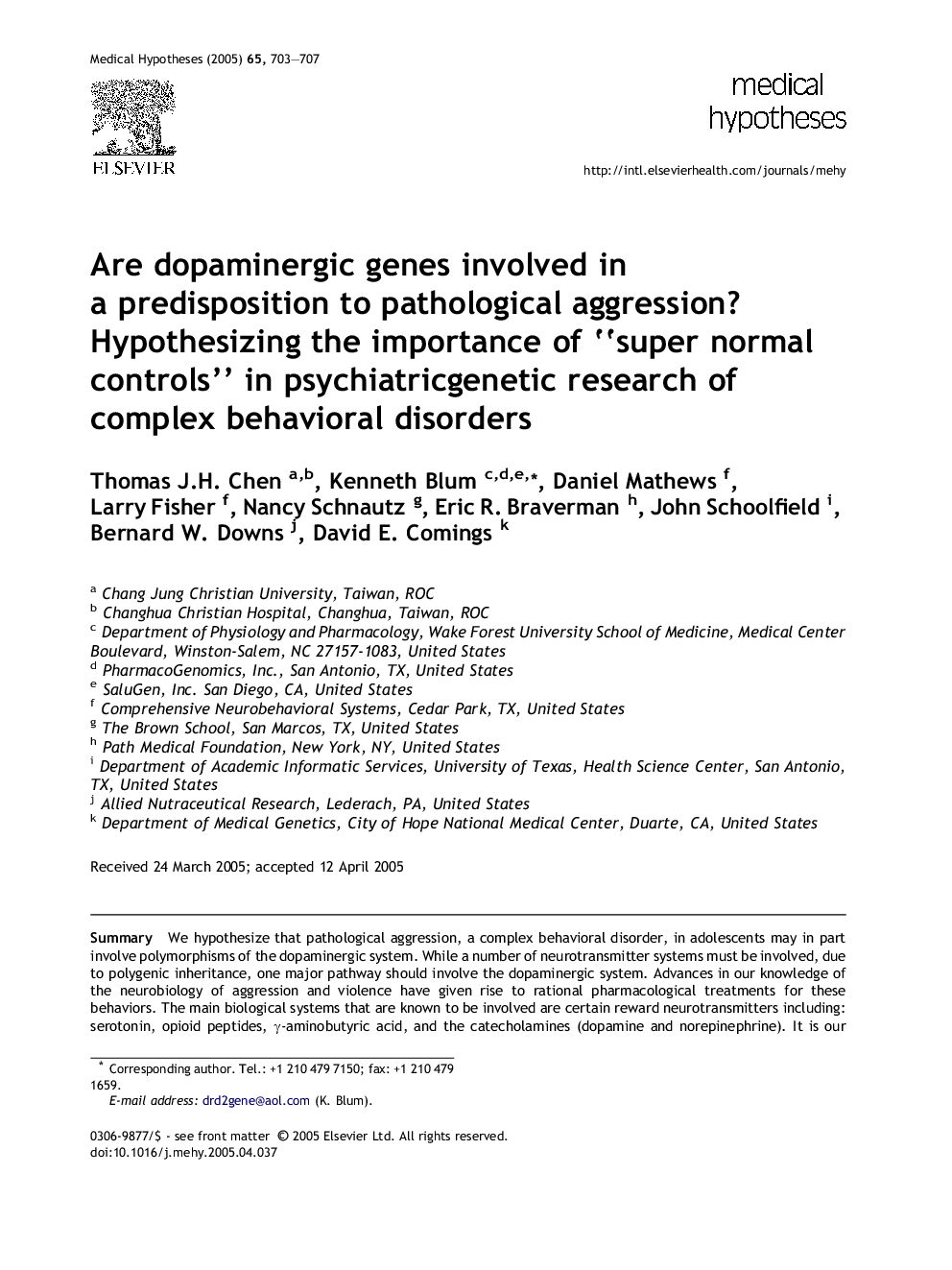| کد مقاله | کد نشریه | سال انتشار | مقاله انگلیسی | نسخه تمام متن |
|---|---|---|---|---|
| 8996172 | 1115126 | 2005 | 5 صفحه PDF | دانلود رایگان |
عنوان انگلیسی مقاله ISI
Are dopaminergic genes involved in a predisposition to pathological aggression?
دانلود مقاله + سفارش ترجمه
دانلود مقاله ISI انگلیسی
رایگان برای ایرانیان
موضوعات مرتبط
علوم زیستی و بیوفناوری
بیوشیمی، ژنتیک و زیست شناسی مولکولی
زیست شناسی تکاملی
پیش نمایش صفحه اول مقاله

چکیده انگلیسی
We hypothesize that pathological aggression, a complex behavioral disorder, in adolescents may in part involve polymorphisms of the dopaminergic system. While a number of neurotransmitter systems must be involved, due to polygenic inheritance, one major pathway should involve the dopaminergic system. Advances in our knowledge of the neurobiology of aggression and violence have given rise to rational pharmacological treatments for these behaviors. The main biological systems that are known to be involved are certain reward neurotransmitters including: serotonin, opioid peptides, γ-aminobutyric acid, and the catecholamines (dopamine and norepinephrine). It is our notion that pathological aggressive behavior is in part similar mechanistically to other forms of impulsive behaviors such as pathological gambling. By analogy to drug dependence, it has been speculated that the underlying pathology in pathological gambling is a reduction in the sensitivity of the reward system. While studying pathological gamblers and controls during a guessing game using functional Magnetic Resonance Imaging, Reuter et al. observed a reduction of ventral striatal and ventromedial prefrontal activation in the pathological gamblers that were negatively correlated with gambling severity. Subsequently, linking hypo activation of these areas to disease severity. A positive correlation of both the dopamine D2 receptor gene (DRD2) and the dopamine transporter gene (DAT1) polymorphisms were observed with pathological violence in adolescents in a blinded clinical trial. Thus, this and other cited work preliminary suggest a role for both the DRD2 and DAT genes in pathological aggressive behavior. We further hypothesize that follow-up gene research in this area, albeit premature, resulting in confirmation of positive correlations with dopaminergic polymorphisms, and utilizing highly screened controls (eliminating any addictive, compulsive and impulsive behaviors in both proband and family) may have important ramifications in our young population.
ناشر
Database: Elsevier - ScienceDirect (ساینس دایرکت)
Journal: Medical Hypotheses - Volume 65, Issue 4, 2005, Pages 703-707
Journal: Medical Hypotheses - Volume 65, Issue 4, 2005, Pages 703-707
نویسندگان
Thomas J.H. Chen, Kenneth Blum, Daniel Mathews, Larry Fisher, Nancy Schnautz, Eric R. Braverman, John Schoolfield, Bernard W. Downs, David E. Comings,